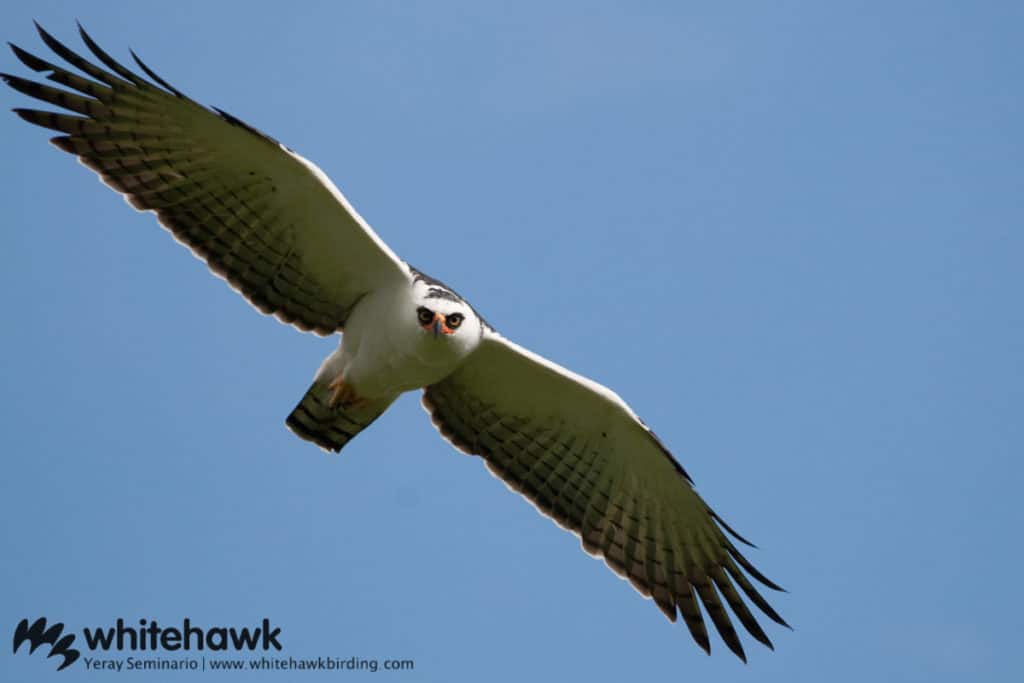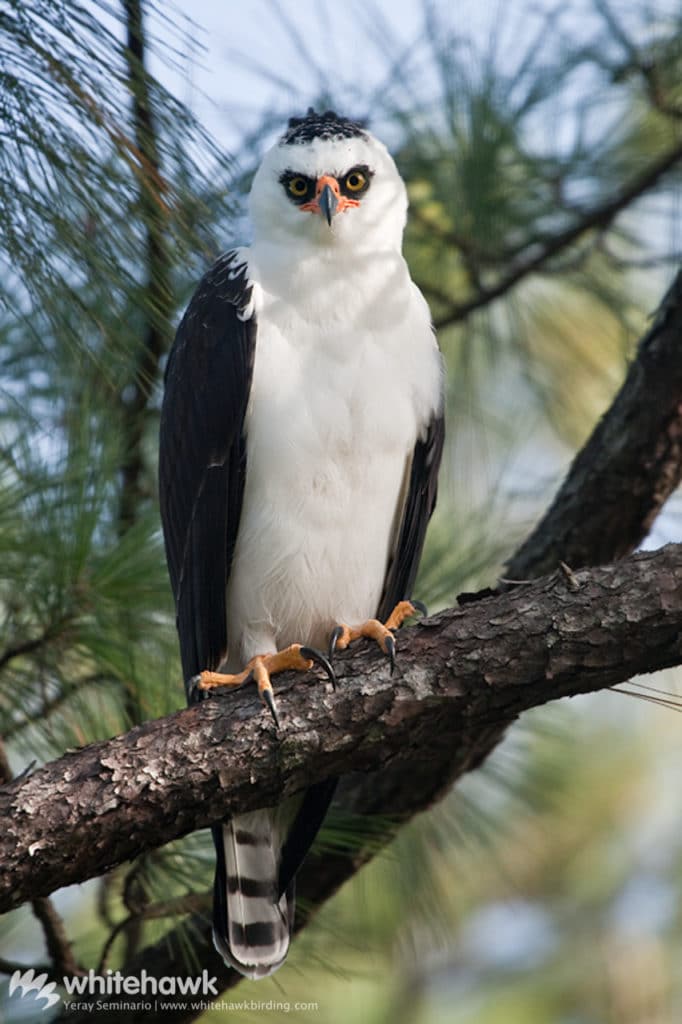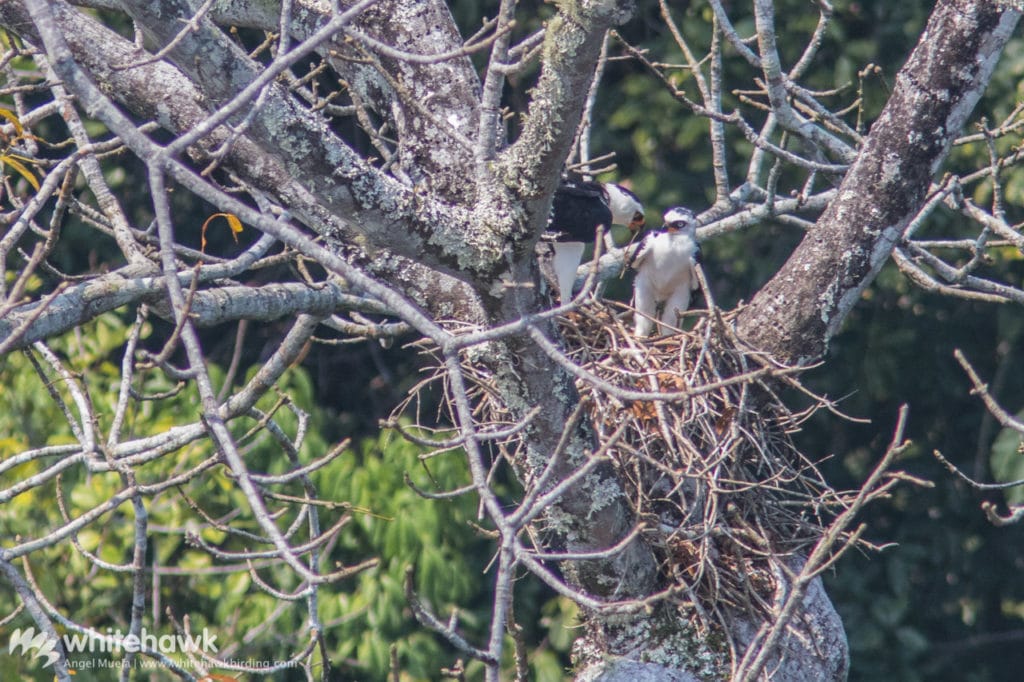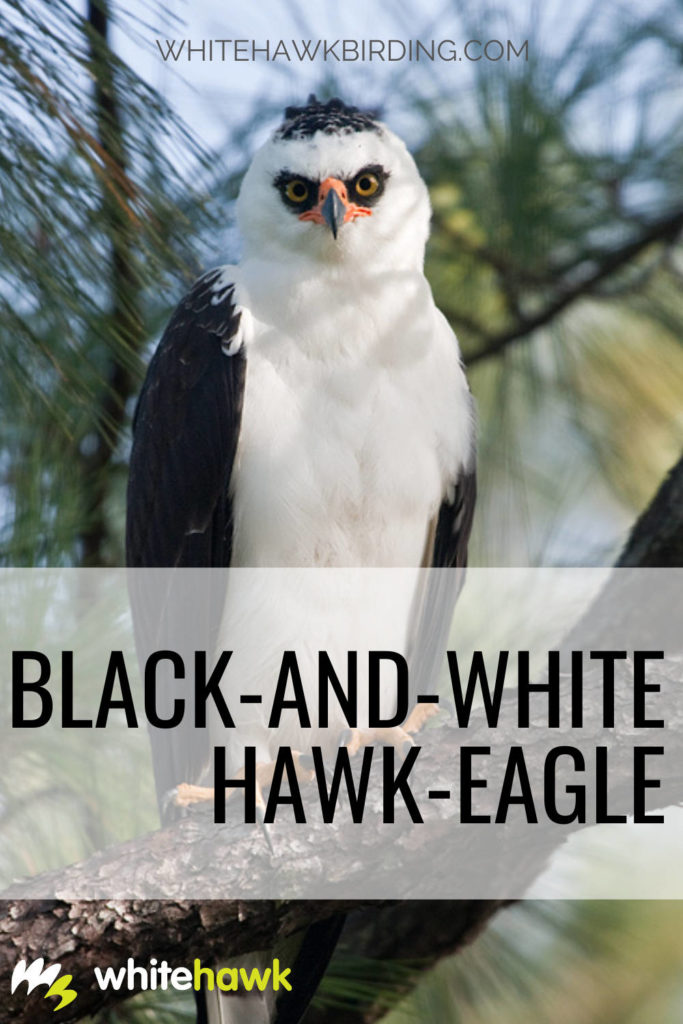Probably one of the most striking of the Neotropical birds of prey, and one of the most difficult to observe perched, is the Black-and-white Hawk-Eagle (Spizaetus melanoleucus). We can find this raptor species throughout a large part of tropical America, from southern Mexico to northern Argentina. Unlike the Black Hawk-Eagle and Ornate Hawk-Eagle, the Black-and-white Hawk-Eagle does not tend to vocalize as much when in flight. And amongst the four species in the genus Spizaetus, it is the least known and studied.
Black-and-white Hawk-Eagles are medium-large raptors predominantly white with black wings, a white leading edge on the wing, a black short crest, a black patch around the eyes, and a gray-black barred tail. They are difficult to mistake for any other bird except perhaps for some juvenile Gray-headed Kites. These birds are known to mimic other species of hawk-eagles when they are young, specially the Black-and-white Hawk-Eagle and the Ornate Hawk-Eagle. In this article, the author describes several examples of the polymorphism of Gray-headed Kites and the close resemblance they can exhibit to hawk-eagles. However, after a quick comparison, one can see several differences between these species. Most notably the bare tarsus in the Gray-headed Kite, versus the feathered tarsus in all the Spizaetus species, and the dark iris in the Gray-headed Kite versus the yellow-orange eye of the hawk-eagles.

Natural History
The Black and White Hawk-Eagle is a skilled predator. It consumes a wide variety of prey from reptiles and amphibians to mammals. However, it appears to mainly feed on medium-sized birds, such as toucans, parrots, and oropendolas. In many ways, Black-and-white Hawk-Eagles behave more like falcons than hawks, stooping from great heights onto unsuspecting potential prey below. Though its large talons have led some researchers to believe that this raptor likely preys widely on mammals as well. It is important to mention that, despite its wide range, this is a little-known raptor. Many more observations need to be done to better understand the species’ dietary needs and behaviors.

The little information we have on this raptor becomes even more clear when it comes to its nesting behavior. Researchers have only described a handful of nests for this species. One of the first ones, from Panama in 1975, was an observation of a nest under construction that was never used. In 2006, researchers located and described the first active nest for Brazil. Shortly thereafter, in 2009, researchers located and described two active nests for Belize. Nests, in general, are large, cup- or platform-shaped structures fashioned from big sticks and twigs. From the little research that has been done on this species, it seems like these birds only lay one egg.

Where to find Black-and-white Hawk-Eagles in Central America
This raptor is present in all of Central America, with the exception perhaps of El Salvador. According to results published in eBird, birders and researchers have observed this species repeatedly in Panama (285 times), and Belize (over 530 times), considerably more than any other country of Central America. Many members of the Whitehawk team worked in Belize for a number of years. We were very lucky to observe this species perched, hunting and soaring over the forests of the Mountain Pine Ridge.
This bird of prey seems to prefer lowland forests and we can find it across different types of habitats including broadleaf tropical forest as well as deciduous forest.
In Panama, some of the best places to see Black-and-white Hawk-Eagles include the Darien province, San Francisco Reserve in eastern Panama province, Cerro Azul and Chagres National Park. There are records of this species in western Panama, but less frequent. It is clear that these large raptors require extensive forest habitat for survival.
Status and Conservation
When one thinks of rainforests, sometimes it is hard not to associate them with deforestation and the all-too-familiar images of giant trees felled by chainsaws and heavy machinery. Sadly, this is a reality throughout much of this eagle’s range. And loss of habitat is one of the major threats the species faces. Other threats include human persecution. As a result, population numbers are declining. Despite this, it remains categorized as a species of Least Concern by the IUCN. This is most likely due to its wide distribution range.
Programs to protect its forest habitat and to promote conservation-based educational activities in communities surrounding Black-and-white Hawk-Eagle populations are key to its long-term survival. Through our Junior Naturalist Program, Whitehawk Birding and Conservation promotes environmental education in both public and private schools in Panama.


